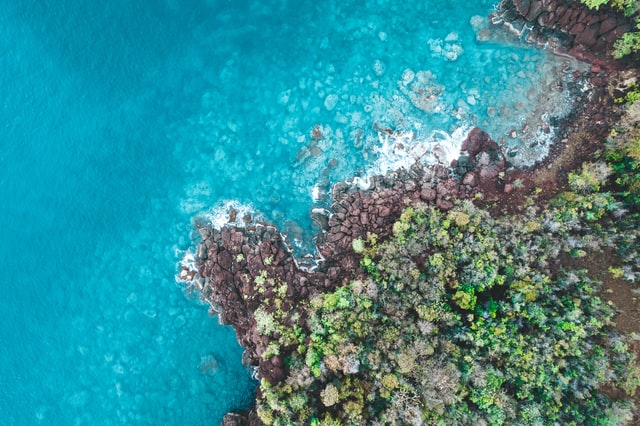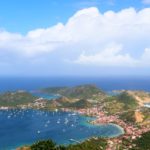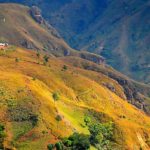Deadly Plants of the Caribbean

The plants here in Guadeloupe are out to kill you. You may think I’m exaggerating, but don’t underestimate the deadly potential of nature. The other day, as I was walking through Place de la Victoire in Pointe-à-Pitre, a mango just barely missed my head. The loud thud caught the attention of some tourists. They looked as surprised as I was.
Before I came to live in Guadeloupe there was only one natural danger that I knew specifically to look out for. I’d heard that more people die each year from coconuts falling on their heads than from shark attacks. Coconut trees hang down into my yard, and the fruit randomly and suddenly drops onto my roof.
The heavy crack, roll, and thump of ripe coconuts above my head warns me of Mother Earth’s potential. I had to explain this danger to my friends the first time we went to the beach. On the beach, it’s necessary to find a spot that provides shade but puts one at the least risk of a ridiculous death.
These days, most of victims are tourists who stand beneath the tree to wait out sporadic rain storms. Even after it stops raining, the water dripping from the leaves may carry the sap with it and burn the skin.
But there is more. There is a tree in Guadeloupe that really poses a danger: the manchineel.
This plant is common in the Caribbean region. They stand like sentinels along the beaches, fighting erosion. The general shape varies, so it can be long with a straight trunk, or branch out wildly like the Tree of Life. The best way of identifying the tree is by its spade-like leaves and fruit that looks like miniature apples.
While in Martinique, I encountered my first manchineel. I read a warning in a tourist guide:
You’ll encounter manchineel trees all along the sandy coast. All parts of this tree are dangerous. The fruit, resembling small apples…, the leaves, the bark, the sap, everything is toxic. Don’t take cover under this tree when it rains and do not use its branches in a barbecue. Contact with any part of this extremely toxic tree can cause severe burns. In Martinique most manchineel trees are painted with a red stripe on the trunk.
The smoke from burning the bark can also cause temporary blindness. The Guinness Book of World Records names the manchineel the world’s most dangerous tree. And while they’re fairly well-marked in Martinique, they are less so in Guadeloupe.
These days, most of victims are tourists who stand beneath the tree to wait out sporadic rain storms. Even after it stops raining, the water dripping from the leaves may carry the sap with it and burn the skin. There are no statistics tracking deaths linked to this tree, but death is possible. Radiologist Nicola H. Strickland wrote an article about her experience with the fruit of the manchineel tree, the infamous “beach apple.”
Sign up for a FREE online writing workshop here.
She describes it as having a sweet taste, but moments later, her throat began to burn. After a few hours, she could hardly swallow because of the pain. The only thing she could get down was milk. She might be considered lucky. She only took one bite.
Because of the small size of the fruit, its initial pleasant flavor, and the gradual increase of its symptoms, it’s easy to imagine someone eating a barrel full before suffering serious problems.
If a person consumes the fruit, it’s important to get to hospital quickly. The juice from the fruit damages the lining of the esophagus and can cause gastrointestinal problems. Whoever said that life in the Caribbean was easy had obviously never encountered its deadly nature.
Deadly Plants of the Caribbean
Related Reading
A Leap of Faith on Grand Cayman Island
Living in the Caribbean: The Real Deal with Caril Phang
First-Time Guadeloupe Tips
Guadeloupe Travel Tips: Ima’s Take on Health, Romance and Safety
Have you traveled to the Caribbean? What were your impressions? Email us at [email protected] for information about sharing your experience and advice with the Pink Pangea community. We can’t wait to hear from you.
Photo by Unsplash.








